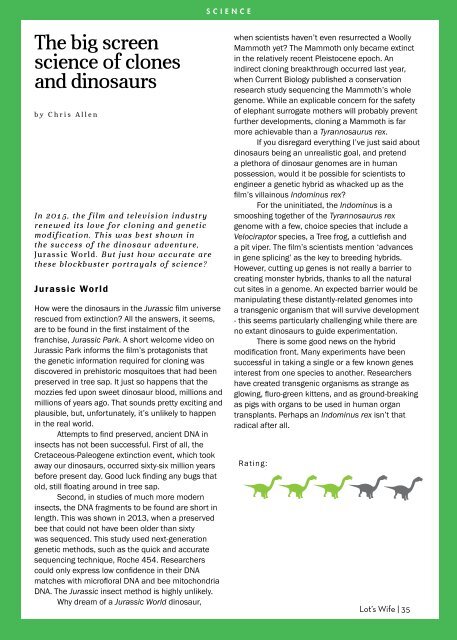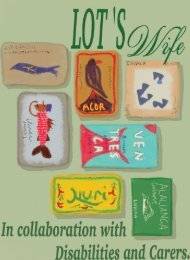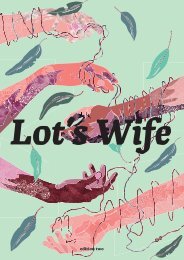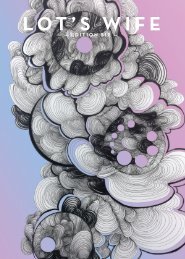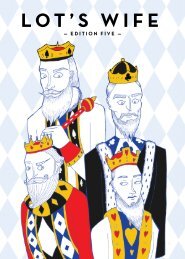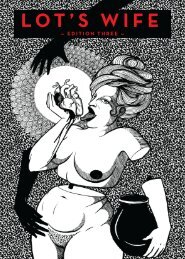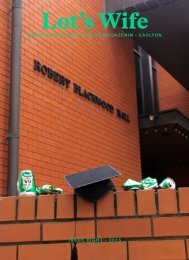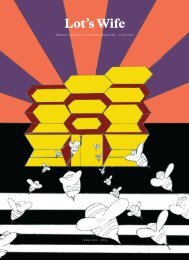Lot's Wife Edition 1 2016
Create successful ePaper yourself
Turn your PDF publications into a flip-book with our unique Google optimized e-Paper software.
SCIENCE<br />
The big screen<br />
science of clones<br />
and dinosaurs<br />
by Chris Allen<br />
In 2015, the film and television industry<br />
renewed its love for cloning and genetic<br />
modification. This was best shown in<br />
the success of the dinosaur adventure,<br />
Jurassic World. But just how accurate are<br />
these blockbuster portrayals of science?<br />
Jurassic World<br />
How were the dinosaurs in the Jurassic film universe<br />
rescued from extinction? All the answers, it seems,<br />
are to be found in the first instalment of the<br />
franchise, Jurassic Park. A short welcome video on<br />
Jurassic Park informs the film’s protagonists that<br />
the genetic information required for cloning was<br />
discovered in prehistoric mosquitoes that had been<br />
preserved in tree sap. It just so happens that the<br />
mozzies fed upon sweet dinosaur blood, millions and<br />
millions of years ago. That sounds pretty exciting and<br />
plausible, but, unfortunately, it’s unlikely to happen<br />
in the real world.<br />
Attempts to find preserved, ancient DNA in<br />
insects has not been successful. First of all, the<br />
Cretaceous-Paleogene extinction event, which took<br />
away our dinosaurs, occurred sixty-six million years<br />
before present day. Good luck finding any bugs that<br />
old, still floating around in tree sap.<br />
Second, in studies of much more modern<br />
insects, the DNA fragments to be found are short in<br />
length. This was shown in 2013, when a preserved<br />
bee that could not have been older than sixty<br />
was sequenced. This study used next-generation<br />
genetic methods, such as the quick and accurate<br />
sequencing technique, Roche 454. Researchers<br />
could only express low confidence in their DNA<br />
matches with microfloral DNA and bee mitochondria<br />
DNA. The Jurassic insect method is highly unlikely.<br />
Why dream of a Jurassic World dinosaur,<br />
when scientists haven’t even resurrected a Woolly<br />
Mammoth yet? The Mammoth only became extinct<br />
in the relatively recent Pleistocene epoch. An<br />
indirect cloning breakthrough occurred last year,<br />
when Current Biology published a conservation<br />
research study sequencing the Mammoth’s whole<br />
genome. While an explicable concern for the safety<br />
of elephant surrogate mothers will probably prevent<br />
further developments, cloning a Mammoth is far<br />
more achievable than a Tyrannosaurus rex.<br />
If you disregard everything I’ve just said about<br />
dinosaurs being an unrealistic goal, and pretend<br />
a plethora of dinosaur genomes are in human<br />
possession, would it be possible for scientists to<br />
engineer a genetic hybrid as whacked up as the<br />
film’s villainous Indominus rex?<br />
For the uninitiated, the Indominus is a<br />
smooshing together of the Tyrannosaurus rex<br />
genome with a few, choice species that include a<br />
Velociraptor species, a Tree frog, a cuttlefish and<br />
a pit viper. The film’s scientists mention ‘advances<br />
in gene splicing’ as the key to breeding hybrids.<br />
However, cutting up genes is not really a barrier to<br />
creating monster hybrids, thanks to all the natural<br />
cut sites in a genome. An expected barrier would be<br />
manipulating these distantly-related genomes into<br />
a transgenic organism that will survive development<br />
- this seems particularly challenging while there are<br />
no extant dinosaurs to guide experimentation.<br />
There is some good news on the hybrid<br />
modification front. Many experiments have been<br />
successful in taking a single or a few known genes<br />
interest from one species to another. Researchers<br />
have created transgenic organisms as strange as<br />
glowing, fluro-green kittens, and as ground-breaking<br />
as pigs with organs to be used in human organ<br />
transplants. Perhaps an Indominus rex isn’t that<br />
radical after all.<br />
Rating:<br />
Lot’s <strong>Wife</strong> | 35


